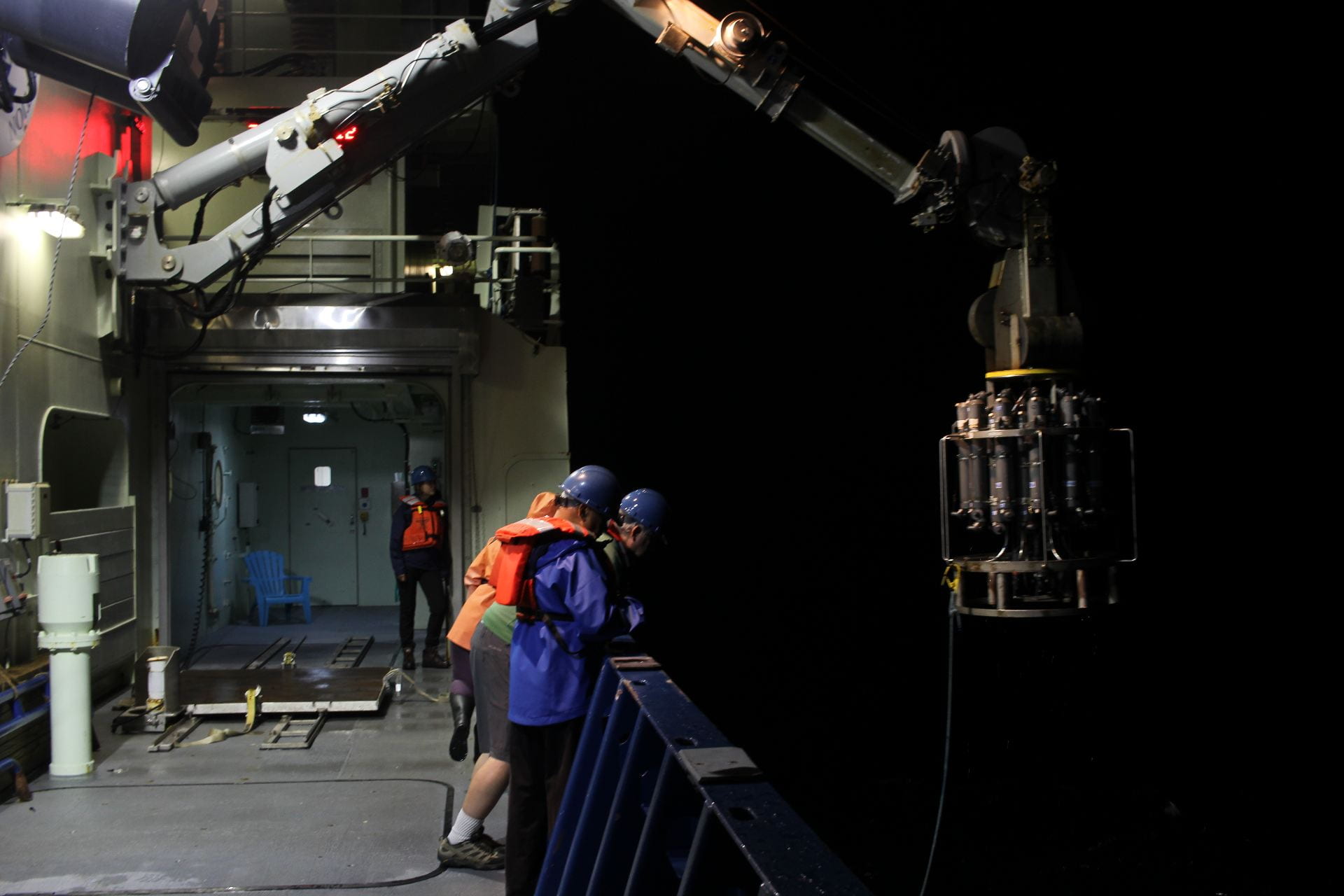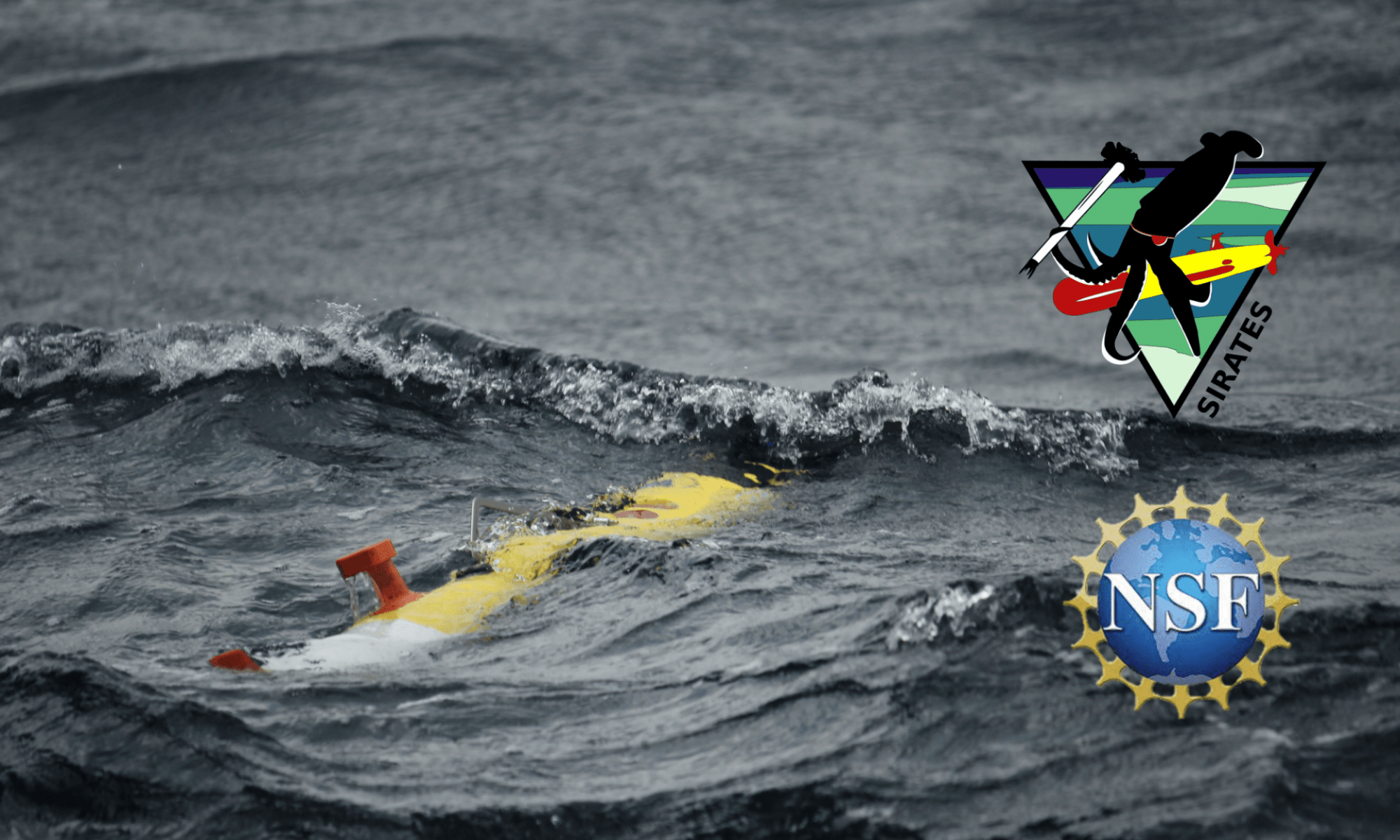To estimate ocean flows, oceanographers study horizontal density variations throughout the oceans. However, bringing water back to the surface and putting it on a scale to measure density is both costly and prone to errors. Thus, in 1969 Neil Brown (WHOI) invented an instrument that simultaneously measures Conductivity (to calculate salinity), Temperature, and Depth, called “CTD.” With these three variables on hand, one can calculate the density of ocean water. Over time more and more instruments and bottles for collecting water samples got attached to the CTD, and today research vessels carry a ~500kg heavy carousel full of instrumentation that is simply called the CTD.
The CTD is used to get a rough overview of the ocean column setup in a particular area. The carousel gets lowered over the side of the research vessel and the winch operator brings it down until about 5m above the ocean floor. Meanwhile, the computers on the science deck broadcast the measured profile live which allows the science party to decide where to take water samples on the way up.

